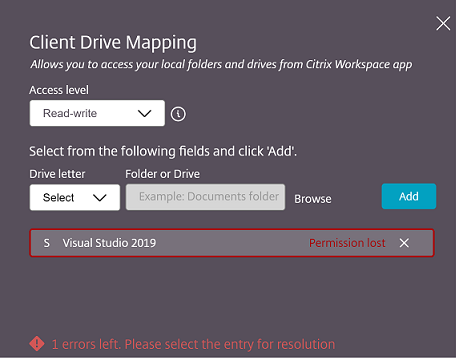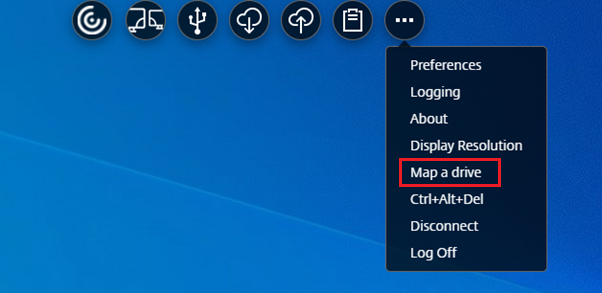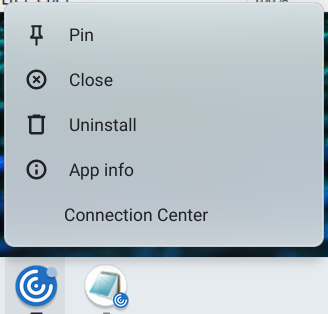File handling
File transfer
Citrix Workspace app for ChromeOS provides secure file transfer functionality between a user device and a Citrix Virtual Apps and Desktops and Citrix DaaS session.
By default, users can:
- Upload files from a local download folder or attached peripheral to the remote desktop session.
- Download files from their Citrix Virtual Apps and Desktops and Citrix DaaS sessions to a local device.
- You can download files to a local folder or a peripheral on your device.
Feature charateristics
- A user can upload or download a maximum of 10 files at a time.
- Maximum file size:
- For uploads: 2147483647 bytes (2 GB)
- For downloads: 262144000 bytes (250 MB)
Feature limitation
- If either the Upload file to Desktop or the Download file from Desktop policy is set to Disabled, the toolbar still displays both the Upload and the Download icons. However, the functionality is based on the policy setting. If both policies are set to Disabled, the Upload and Download icons aren’t displayed in the toolbar.
Client Drive Mapping
Starting with the 2307 version, the Client Drive Mapping (CDM) feature supports folder mapping on the local ChromeOS device so they’re accessible from within a session. You can map any folder from the ChromeOS device, for example, folders from Downloads, Google Drive, and USB drives, if the folder doesn’t contain system files.
You can do the following operations:
- Copy files and folders to the mapped drive from the session and the other way around.
- View the list of files and folders in the mapped drive.
- Open, read, and modify the file contents in the mapped drive.
- View the file properties (modified time and file size only) in the mapped drive.
This feature provides the advantage of accessing both virtual desktop drives and local machine drives together in the file explorer within the HDX session.
Known limitations
- You can’t rename files and folders inside the mapped drive.
- Mappings will only have the name of the folder and not the full path.
- If your local folder has hidden files, and you mapped the same folder, the hidden files are visible inside the session in the mapped drive.
- You can’t change the file property to read-only access in the mapped drive.
-
When you map a folder from a removable device and if you remove the device during an active session, you can’t use the mapped drive inside the session. To remove the mappings manually, click X mark against the particular mapping.

Access level
You can set the folder or drive access levels when the feature is enabled. For example, if an administrator sets availableAccessLevels as [“No-Access”, “Read-only”], you can view the Read-Only Access and No-Access options in the drop-down list.
How to use the CDM feature
On desktop sessions:
-
Navigate to the Toolbar > more (…) > Map a drive.

The CDM dialog appears.
-
See How to use CDM UI section for the next steps.
On app and desktop sessions:
-
From the Chrome shelf, right-click the Citrix Workspace app icon and select Connection Center

The Connection Center screen appears.
-
Select the session and the app. Click Map a drive.

The CDM dialog appears.
-
See How to use CDM UI section for the next steps.
How to use CDM UI
-
Select the Access level for the folder or the drive. The drop-down list option that you see depends upon the access level set by your organization’s IT administrator for your profile.

- Select a Drive letter and click Browse to navigate to your folder or drive in your Chromebook.
- Click Add.
-
Disconnect and reconnect the session.
The session displays the drive letter that is mapped inside the session.